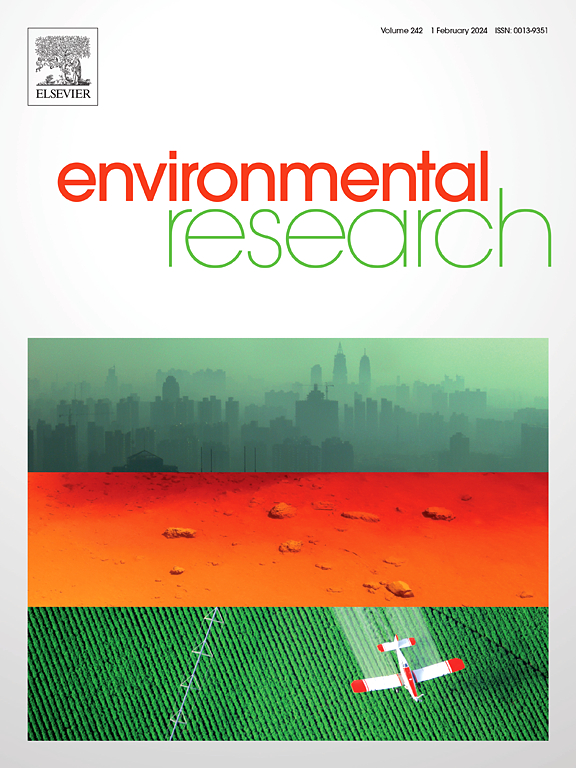Environmental factors mediate mercury exposure in fish with diverse feeding habits in the Beibu Gulf
IF 7.7
2区 环境科学与生态学
Q1 ENVIRONMENTAL SCIENCES
引用次数: 0
Abstract
Tropical and subtropical oceans, including the Beibu Gulf, a key fishing area in China, receive a substantial share of global mercury (Hg) deposition, yet the exposure levels and influencing factors in marine organisms remain underexplored. This study analyzed total and methylated Hg (THg and MeHg) concentrations in 650 fish from 10 species across 24 sites in the eastern Beibu Gulf in April and August 2022, along with concurrent surface water parameter measurements. The significant variations in fish Hg content across species were primarily driven by feeding habits, with benthic feeders exhibiting notably higher Hg levels than nekton and zooplankton feeders. Among 13 seawater parameters, temperature and pH were found to significantly influence Hg concentrations across species, with these effects varying by feeding guild. As sea temperature rose, MeHg levels increased in nekton-feeding fish but decreased in zooplankton-feeding fish, whereas in benthos-feeding species, MeHg levels showed a significant negative correlation with pH rather than temperature. Hg levels in Upeneus sulphureus and Johnius belangerii pose moderate and low risks for human consumption, respectively, with long-term consumption potentially reducing neonatal IQ by 0.45 points and increasing the risk of fatal heart attacks by 2.68 cases per 100,000 person-years in adults.

环境因素对北部湾不同食性鱼类汞暴露的影响。
包括中国重要渔区北部湾在内的热带和亚热带海洋接受了全球汞(Hg)沉降的很大一部分,但海洋生物的暴露水平和影响因素尚未得到充分研究。本研究分析了2022年4月和8月北部湾东部24个地点10种650条鱼的总汞和甲基汞(THg和MeHg)浓度,并同时测量了地面水参数。不同种类鱼类汞含量的显著差异主要是由摄食习惯驱动的,底栖动物的汞含量明显高于浮游动物和浮游动物。在13个海水参数中,温度和pH值对不同物种的汞浓度有显著影响,且这种影响随饲养方式的不同而不同。随着海水温度的升高,以内胆为食的鱼类MeHg含量升高,以浮游动物为食的鱼类MeHg含量降低,而以底栖动物为食的鱼类MeHg含量与pH呈显著负相关,而与温度呈显著负相关。硫磺鱼和贝兰杰尼乌斯的汞含量分别对人类食用构成中等和低风险,长期食用可能使新生儿智商降低0.45分,并使成人每10万人中致命性心脏病发作的风险增加2.68例。
本文章由计算机程序翻译,如有差异,请以英文原文为准。
求助全文
约1分钟内获得全文
求助全文
来源期刊

Environmental Research
环境科学-公共卫生、环境卫生与职业卫生
CiteScore
12.60
自引率
8.40%
发文量
2480
审稿时长
4.7 months
期刊介绍:
The Environmental Research journal presents a broad range of interdisciplinary research, focused on addressing worldwide environmental concerns and featuring innovative findings. Our publication strives to explore relevant anthropogenic issues across various environmental sectors, showcasing practical applications in real-life settings.
 求助内容:
求助内容: 应助结果提醒方式:
应助结果提醒方式:


